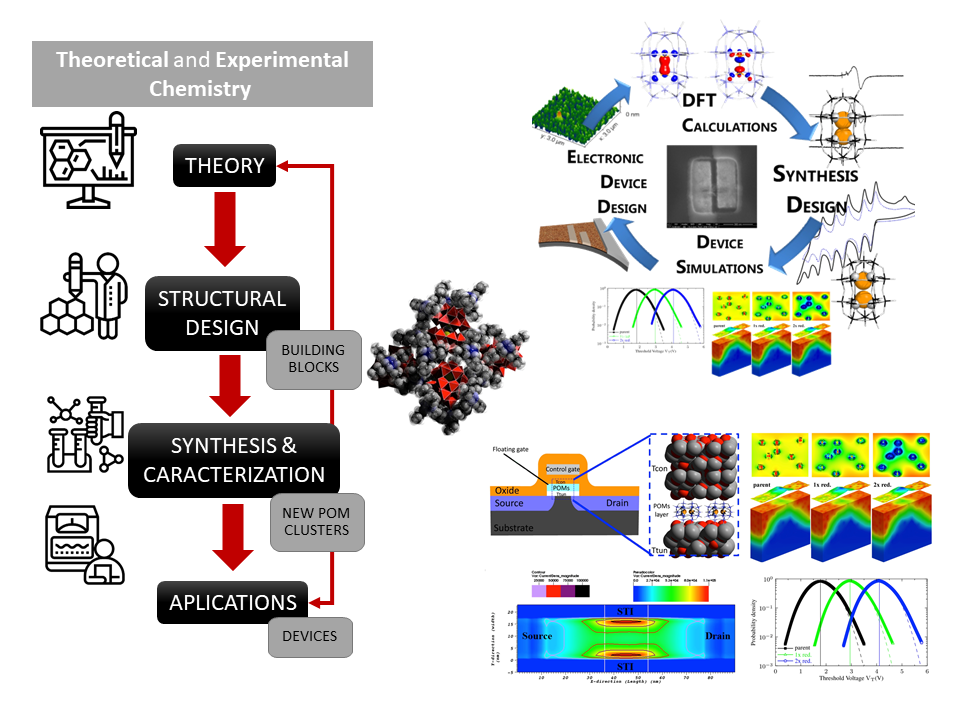Self – assembly in metal oxides
Research in LVN group centres on understanding self-assembly. The strategies that nature employs to construct assemblies of polynuclear clusters are still unclear. During her career Dr Vilà-Nadal studied the assembly process of metal oxide clusters– and described – in several publications, see below – that despite the great number of controlling factors, within the small nuclearity range, these systems can be understood combining theoretical simulations (e.g. DFT, MD, CPMD, etc.) and experimental methods (e.g. ESI-MS experiments, NMR, UV vis, etc. ). In this research we aim to understand, control and apply self-assembly to a wide range of molecular based systems leading to control of assemblies made from a variety of hard, soft, and hybrid materials using theory. Initially we will focus in two main applications of these new designed molecules, firstly to improve existing complementary metal-oxide-semiconductors (CMOS) technology and secondly as all-inorganic porous materials (POMzites). The use of oxide based materials in electronics provides a way to further increase the circuit density in electronic devices, beyond the limitations of lithography. POMzites conceptually, bridge the gap between zeolites and metal–organic frameworks (MOFs) and establish a new class of all-inorganic metal oxide frameworks that can be designed using topological and reactivity principles similar to MOFs. To start this work we will leverage Dr Vilà-Nadal ‘s experience in molecular metal oxides, or polyoxometalates (POMs) since they offer a route to achieve this control at a molecular level, and she has been working in the field for over 10 years.
Relevant Publications
L. Vilà-Nadal et al. in:
- J. Am. Chem. Soc., 2018, 140, 9379–9382. (link)
- Nat. Rev. Mat., 2017,2, 17054. (link)
- J. Am. Chem. Soc., 2016, 28, 8765–8773. (link)
- Nature, 2014, 515, 545–549. (link)
- Phys. Chem. Chem. Phys., 2011, 13, 20136–20145. (link)
- Angew. Chem. Int. Ed., 2009, 48, 5452–5456. (link)

